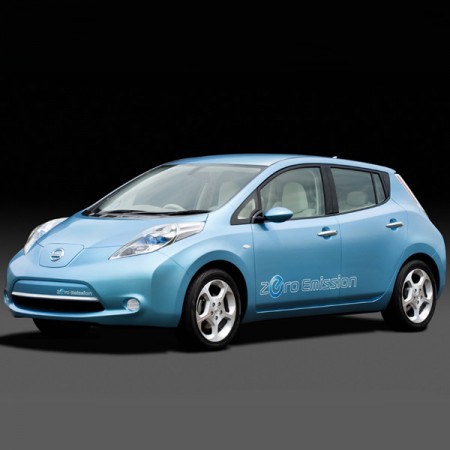By John Voelcker, Green Car Reports
Amidst supposedly slow sales–actually limited mostly by low production–one benefit to automakers of offering electric cars has nothing to do with cars that plug in.
Not only do electric cars attract radically different buyers to the brands that offer them, they also help sell conventional gasoline cars.

Plug-in cars, it turns out, are “halo vehicles” that attract shoppers into showrooms–and those shoppers may end up buying another vehicle, sans plug.
Stories in The Detroit News and other outlets have reported on data showing that the Chevrolet Volt and Nissan Leaf plug-in vehicles attract new customers into those makers’ showrooms.
Some only come to look, or perhaps ask for a test drive–despite not intending to buy.
But knowing that a questioner may become a buyer, the smarter dealers will accommodate their desires–one reason Chevrolet insists that each of its Volt-certified dealers keep one demonstration Volt on hand that it’s not allowed to sell.
Data on thousands of buyers who put down a deposit on a 2011 Nissan Leaf shows that most already drive a hybrid car–the Toyota Prius was most common–but few have owned any Nissan vehicle before. Nissan now says that fully 83 percent of Leaf buyers are new to Nissan vehicles.
In June, GM released data on its first wave of Volt buyers. One third of them had never in their life entered a Chevy dealer, and half hadn’t been into one in the last 10 years. Almost 90 percent of their trade-ins were non-GM vehicles (33 percent were hybrids), including various luxury makes.
Both makes are attracting new buyers in key early-adopter markets where its cars are all but invisible: southern California, the San Francisco Bay Area, the wealthy suburbs of New York City.
But do they lure buyers into gasoline vehicles too? The use of electric cars as halo vehicles to sell more pedestrian models was clearly on display at recent GM “Main Street in Motion” drive events held in stadium parking lots all over the country.
The goal of these events is to get potential buyers to drive new models from Chevrolet, Buick, and GMC in a low-pressure environment with no salespeople. Demonstrating GM’s cars against competitors’ models will boost buyers’ impressions of GM’s vehicles, the theory goes, even if not all of them buy one.
As we wrote in our June coverage of one “Main Street in Motion” event at New York’s CitiField, drives in the 2011 Chevrolet Volt extended-range electric car proved extremely popular, and it had its own driving area.
But because Volt production will be limited at least through next year, Chevy asked that everyone interested in driving the Volt electric car first drive the similarly sized compact Cruze four-door sedan.
In late August, GM said, “According to web traffic data on both Chevy.com and Edmumds.com, the Cruze is the No. 1 cross-shopped Chevrolet vehicle with the Volt. Since April, nearly 200,000 visitors searching for information on the Chevrolet Volt also searched for information on the Cruze.”
At the moment, while the Volt struggles to reach sales of 1,000 cars per month, Chevrolet is selling about 25,000 Cruzes each month. That’s far higher than the best sales for its mediocre predecessor, the Chevrolet Cobalt.
Lure ’em in with a halo car, sell ’em a family sedan. It’s been a tried-and-true marketing tactic for decades. It’s just that now the halo car has ditched its V-8 and added … a plug.
![]() Editor’s Note: This new story comes to us as a cross post courtesy of Green Car Reports. Author credit for the story goes to John Voelcker.
Editor’s Note: This new story comes to us as a cross post courtesy of Green Car Reports. Author credit for the story goes to John Voelcker.